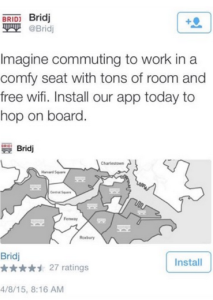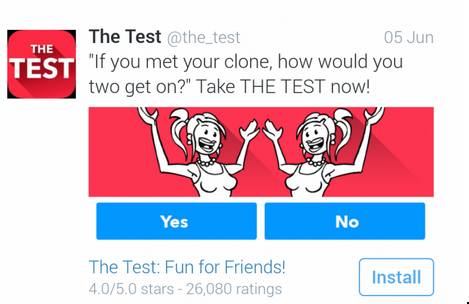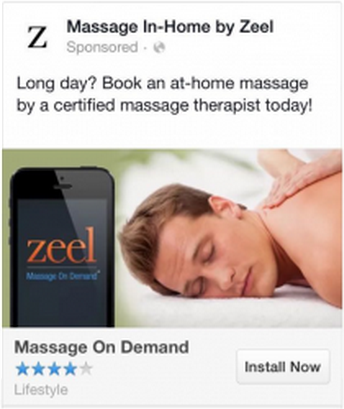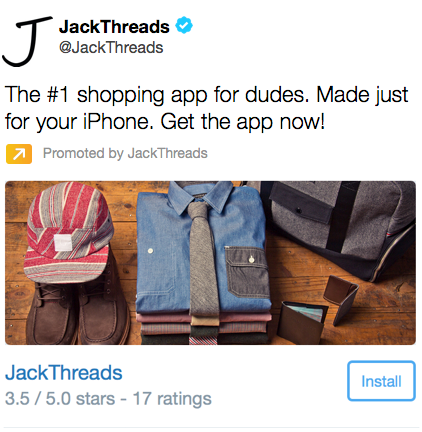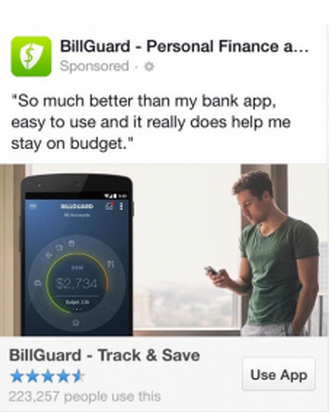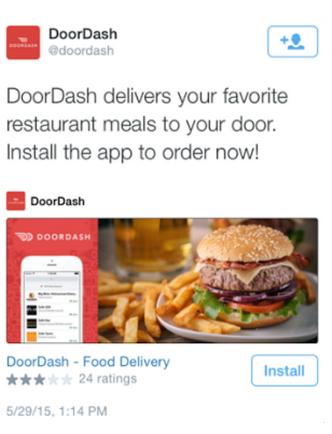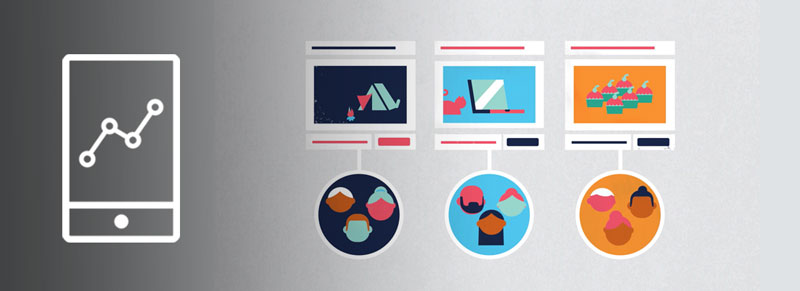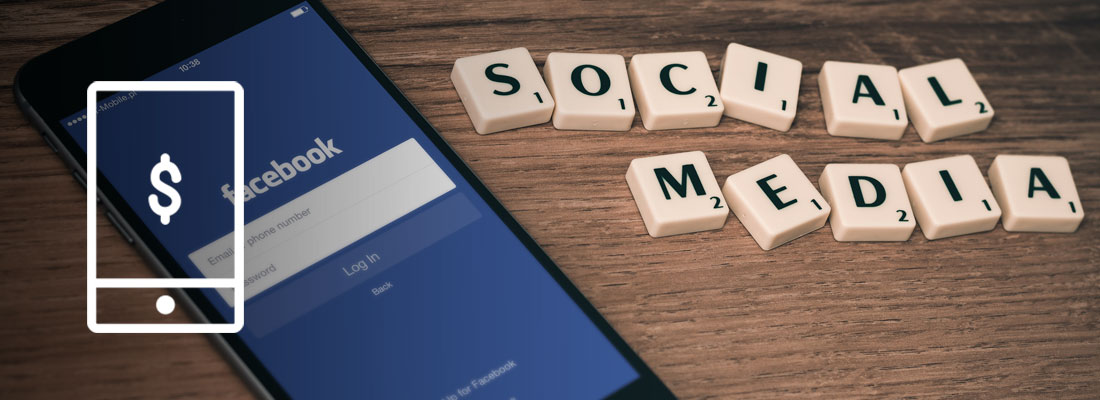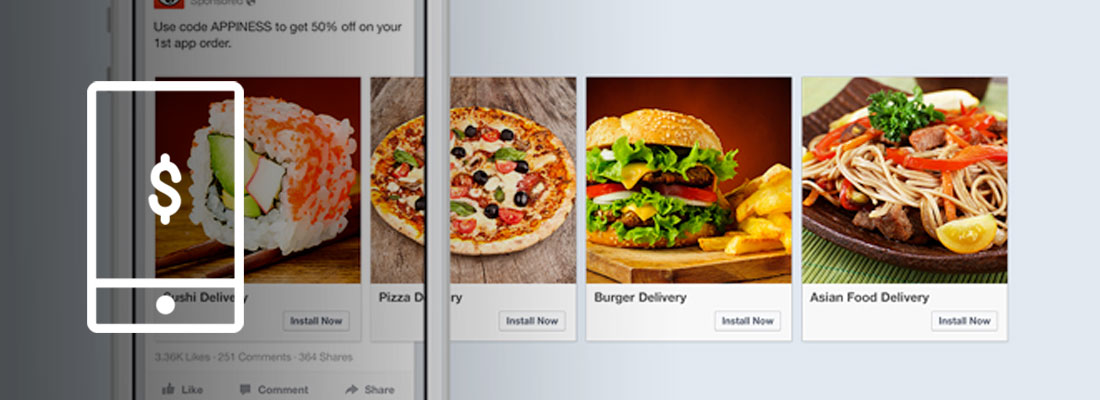The Anatomy of a Perfect App Install Ad
Facebook Ads
August 18, 2015
Guest post by Logan Merrick (Buzinga App Development).
Apps fail for many reasons (the app has bugs, lacks a good idea, has a bad team) but one of the most common ones is that it doesn’t attract enough users to ever gain traction.
The “build it and they will come” theory is exactly that – a theory. An app that doesn’t invest in marketing to its audience will squander the thousands of dollars spent in development, because it won’t ever get discovered.
Social media marketing is a fantastically cheap way for app developers to promote their app to a targeted audience, spread word of mouth and drive traffic to the app store.
In this post, I’ll walk you through the 3 key elements of a high-converting app install ad for Facebook and Twitter, and how you can leverage them to drive click through to your app store page.
These elements are best practices you can take with you when designing for any audience, but what makes app install ads so powerful is their targeting features. Facebook and Twitter allow you to target users based on demographics (age, gender, location, etc), interests, behaviours and device types.
Narrow down this target audience as much as you can and always keep them in mind when designing your ads. Putting your ads in front of the right people is just as important as designing a powerful ad in the first place. Without the right targeting, your ad efforts will be wasted.
With this in mind, let’s get straight into it!
When designing ads for social media, consider the following AIDA framework.
Attention: How are you going to stand out from marketing clutter at a first glance?
Interest: What about your ad is actually compelling, or piques curiosity in the reader to learn more?
Desire: How are you going to convince the reader that they NEED to download your app, and convey its urgency?
Action: Directly prompt the reader to download your app with a call to action (CTA)
How to test your ad creatives?
The best practices below help you create performing ads. However you should still experiment and test to learn which Facebook ad creatives work best in YOUR case.
So once you’ve created your ads you use this guide to testing and optimizing app install ads on Facebook.
1. IMAGE
The image is the first thing that readers notice in your ad. Social media users are incredibly visual – On Twitter, posts with an image are 10% more likely to be shared than those without an image. On Facebook, it’s a 30% difference.
Therefore, if your image isn’t high-quality and captivating, people won’t stop scrolling to read it.
First, here are some key things to note for images on both networks:
Twitter install ad
- Recommended image size: 1024 x 512
Facebook install ad
- The recommended image size is 1200 x 628 px. Stick to this to avoid having parts of your image cut off or it looking stretched.
- You can include up to 5 images to display on a carousel at no extra cost. Users can swipe through a line of different images, each with a different headline.

- Up to 20% of the image may contain text. Facebook are strict on this and will not approve your ad if you go above this limit. You can check your images using Facebook’s Grid Tool.
Follow these best practices to capture readers’ initial attention, and get them to start reading your text.
1. Use images with minimal design and cohesive colour
Clashing colours might look good in game play, but newsfeeds are becoming more and more minimal. A simple design with few graphic elements will be less harsh on the eye.
2. Target to different platforms
When you are creating your campaign, you can select which devices you want to target your ad to. If your image contains a photo of your app opened on a device screen, it’s a good idea to use 2 different photos to target Android users and iPhone users.
3. Showcase your product
Don’t use stock images, which are high quality but can come across ingenuine. Depending on your app’s function, use screenshots of your app (Like Onavo does below) or images that convey user benefits.
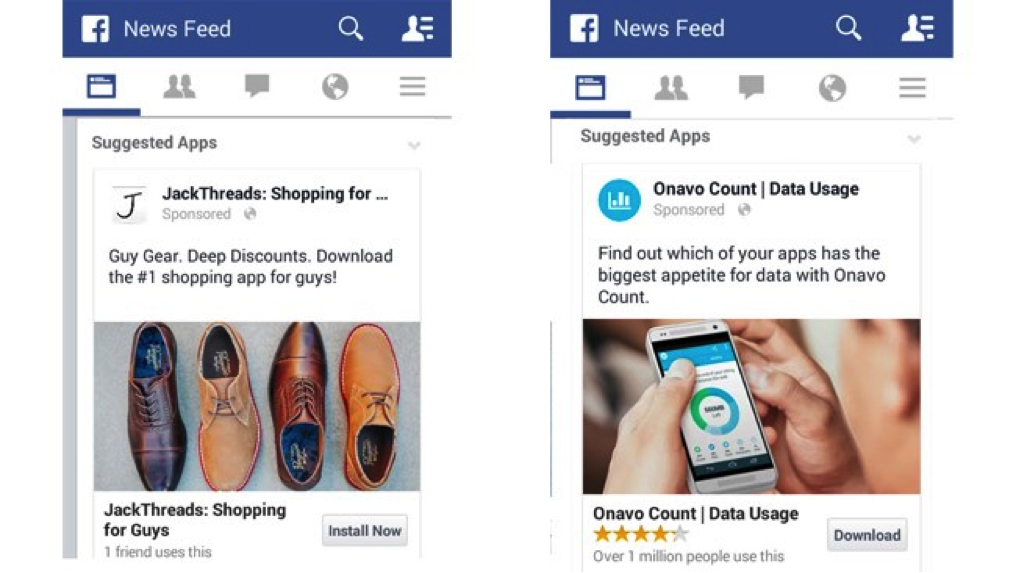
4. Optimise for small screens
Use images that aren’t too detailed or text heavy – your image needs to be able to maintain its integrity on any device.
5. Keep it relevant
Both Twitter and Facebook allow you to select your audience based on key demographics like age, gender and location. Keep these demographics in mind when choosing your image, so you can remain as relevant as possible.
If location services are a prominent feature of your app, make sure the image shows locations relevant to the area you’re targeting.
If you want to attract men and women, you could potentially use 2 different photos to target each gender.
2. COPY
Copywriting looks easy, but is incredibly challenging in practice. The key is to balance a natural tone with a sense of urgency, without sounding too salesy.
There are a few key differences between Facebook and Twitter you should be aware of when writing copy.
Twitter install ad
- You have 116 characters to make your case
- Minimise distractions caused by # and @ – they’ve been shown to reduce click through rate compared to cleaner text.
- Share your star ratings – unlike Facebook, Twitter gives you the option to not display your star rating. If your average is above 3.5 stars I would definitely include it, as ratings make your app look reliable and popular.
Facebook install ad
In Facebook ads, you can customise 2 main areas of text: the body and the headline.
Your star rating will automatically display just under the headline (that’s even more incentive to encourage positive ratings!).
Headline (25 characters) – The example above is wasting its headline potential by repeating its app name, which automatically appears at the top of the ad.
Space is precious, you shouldn’t repeat text anywhere!
Instead, get inside the mind of your customer. What is the primary benefit your app delivers to users?
How can you summarise it in 1-4 words and clearly convey what industry your app is in?
For example:
- Cheap flights
- Food. To you. Now.
- Instant Cabs
Body (90 characters) – The image and the headline are what captures attention. But how do you get them to actually click that CTA?
The body gives you more space to convey your app’s key benefits, and convince readers that your app is the best solution for them.
Here are some best practices for writing hard-hitting copy:
1. Problem then solution
A widely used (and effective) strategy is to begin with a question or pain point that the reader can identify with. Then, follow it up with how your app solves that problem.
Starting with a question grabs the reader’s attention because it talks directly to them.
Alternatively, you can use a hard hitting statement:
- “Stock photography is expensive.”
- “Don’t let cabs pass you by.”
- “Sell items from your closet for cash!”
Then, you seal the deal by launching into your selling proposition, or how your app addresses the pain point you just stated. In this sentence, provide a road map for the reader that tells them what they’re going to get out of your app.
- “learn something new every day in 15 minutes”
- “get new style ideas”
- “track your sugar intake by the teaspoon”
Zeel uses this strategy in its body text below.
2. Use social proof
Social proof is one of the key tools to persuasion in advertising.
It describes the effect that group validation has on our own opinions. These include awards, ratings, reviews, sponsorship and referrals – Anything that gives your app 3rd party credibility.
Especially if your app costs money to download, social proof is valuable to new users as it ‘de-risks’ their decision to install an app.
Some popular examples you can work into your copy include your current download rate, any prominent magazines or blogs your app was featured in, quotes from customer reviews, and any awards your app has won.
Both Jack Threads and Bill Guard have done an excellent job of using social proof below.
3. CALL TO ACTION
In marketing, you always finish by telling the reader what you want them to do.
A stunning image and description of your app means nothing if it doesn’t drive downloads.
Facebook has 11 CTA buttons to choose from:
- Install Now
- Use App
- Book Now
- Download
- Learn More
- Listen Now
- Play Game
- Shop Now
- Sign Up
- Watch Video
- Watch More
Choose the one that best fits both the copy and the primary function of your app – ‘install now’ and ‘download’ are quite generic, but if your app is a game or a shopping app, for example, you can be more specific.
Twitter has 7 CTAs to choose from:
- Install
- Open
- Play
- Shop
- Book
- Connect
- Order
Both Facebook and Twitter’s CTAs are quite restrictive. If you want, you can complement it by adding a CTA into your body text to make it punchier and more urgent.
Craft your CTA to tell users exactly what they’re getting from hitting the install button, thinking past the installation itself.
You can see how Door Dash does this in the example below. They could have just said “Install the app now!”, but by adding the verb “order” it paints a picture of user benefits going further than just getting a download.
These are just a few recommendations based on successful ad campaigns. Ultimately, you can be as creative as you want and experiment with the results!
I encourage you to test multiple creatives of the one ad to see which receives higher engagement. You can tweak the image, the copy and the CTA in a test campaign before you do a full social media campaign, and know where your money will be best spent.
Also, if you’d like to learn how to use Facebook and Twitter to craft an entire social media campaign check out these resources:
How To Use Facebook To Increase App Downloads
How To Use Twitter To Increase App Downloads
Let me know if you use any of these best practices in your ads by commenting below!
***
About the author:
Logan Merrick is the co-founder and strategic director of Buzinga App Development, helping emerging tech businesses and innovative enterprises build world class apps. He has been personally involved in the development of over 75 successful projects, and writes regularly on the subjects of technology, startups and all stages of the app development process. Connect with him on LinkedIn or Twitter.
- Engage, Retain, Earn: Growth Strategy for Game Apps [Based on Data] - 15 September 2022
- How to do App Store Optimization step-by-step: a full cycle of ASO in the App Store and Google Play - 9 August 2022
- The Importance of A/B Testing - 13 January 2022

